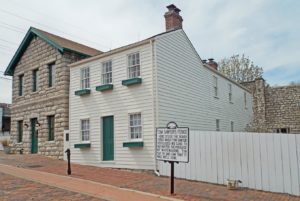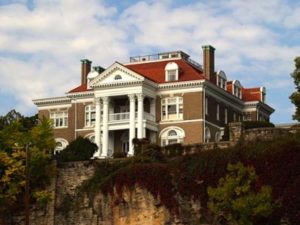Hannibal Missouri
The world knows Hannibal Missouri as the boyhood home of Mark Twain (Samuel Langhorne Clemens) and as the setting for The Adventures of Tom Sawyer and Adventures of Huckleberry Finn. Likewise, Hannibal boasts many historical sites related to Twain’s stories including the Mark Twain Cave and of course, the Mississippi River.
The Mark Twain Boyhood Home & Museum marked its 100th anniversary in 2012. Because of the Museum and Mark Twain, both American and international tourists come to Hannibal. Last year, visitors came from fifty states and seventy-nine different countries.
But, it’s a great little river town worth knowing, all on its own!
Hannibal History
New Madrid Earthquake
Early settlers and Native American tribes came to the area because salt deposits were plentiful and winter hunting grounds abundant. Above all, the New Madrid earthquake of 1811 put the area on the map. A series of earthquakes killed hundreds of people, destroyed thousands of acres of virgin forest, and shook across one million square miles. Consequently, in 1815 Congress passed the first Disaster Relief Act which granted 640 acres to landowners who suffered losses from the earthquakes.
Abraham Bird held one of the New Madrid Certificates to buy any unclaimed land in Missouri. Around 1818, Moses Bates came to the area from St. Louis to start a new community. He convinced Abraham’s son, Thompson, to claim the area around Bear Creek. Bird then gave Bates a 1/8 interest in the property and sold half of the claim to a St. Louis investor, Stephen Glascock. Subsequently, Bates surveyed the site in 1819 and named it Hannibal Creek (now Bear Creek), after the hero of ancient Carthage – Hannibal.
A City is Born
Bates brought enslaved blacks with him and opened a trading post. However, times were tough. Hannibal grew slowly. Only 30 people lived here by 1830. Because of access to the Mississippi river and railroad transportation, Hannibal’s population ballooned to 2,020 by 1850. Subsequently, the town of South Hannibal was annexed in 1843. And in 1845, Hannibal became a city.
In 1846, the Hannibal and St. Joseph Railroad was organized in the offices of John M. Clemens (Mark Twain’s father). It was the rail line furthest west before the Transcontinental Railroad was completed. Most importantly, it took the mail to St. Joe and the Pony Express. Of importance to us, Alfred Lamb, the first owner of our property, was the President of the railroad. By that time, Hannibal was Missouri’s third largest city.
Throughout the remainder of the 19th & 20th centuries, Hannibal was a bustling center for livestock, grain and lumber as well as cement and shoes. The Atlas Portland Cement Company, located in the nearby unincorporated company town of Ilasco, made the cement for the Empire State Building and Panama Canal.
Other Interesting Facts about Hannibal
Hannibal is the hometown of other notables. In the musical Damn Yankees, Hannibal was the hometown of the protagonist’s assumed persona, Shoeless Joe from Hannibal, MO. Hannibal was the hometown of Col. Sherman T. Potter (portrayed by actor Harry Morgan) on the comedy series, M*A*S*H. Hannibal was also the birthplace of singer and actor Cliff Edwards (“Ukelele Ike”). Margaret Brown -The Unsinkable Molly’ Brown was also born here. Other natives include inventor Bill Lear, of Lear Jet fame and NBA basketball coach Cotton Fitzsimmons.
Hannibal is also home to some pretty famous structures. The Mark Twain Memorial Lighthouse was constructed in 1933. Presidents Franklin Delano Roosevelt, John F. Kennedy, and Bill Clinton each lit the lighthouse. Rockcliffe Mansion sits high upon a hill in Hannibal and is listed on the National Register of Historic places.
And in 2020, Hannibal celebrated its Bicentennial.






